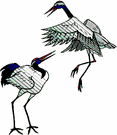Bright but hard-to-see Yellow-breasted Chat
 The Canon City Riverwalk has been filled with songs from both neotropical migrants and resident songsters-and louder than them all is the cacophonous vocalizations of Yellow-breasted Chats. This chat got my attention by mimicing the "mewing" calls made by the Gray Catbirds that had been singing in the area--I really thought I would see a catbird so was surprised to find this chat making the calls.
The Canon City Riverwalk has been filled with songs from both neotropical migrants and resident songsters-and louder than them all is the cacophonous vocalizations of Yellow-breasted Chats. This chat got my attention by mimicing the "mewing" calls made by the Gray Catbirds that had been singing in the area--I really thought I would see a catbird so was surprised to find this chat making the calls.Though the males have bright yellow throats and breasts like this bird, they are most effective in concealing themselves behind branches and leaves. I stood most still to let this bird think it was concealed from me as I took these pics and listened to it calling. SeEtta





















